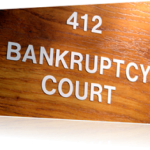 If you’re working on a case where the debtor has a large trust or retirement account, you will want to be aware of how to manage the accounts in regards to schedule Schedule B. Many debtors will worry about jeopardizing their retirement money when they file bankruptcy. In several states the exemptions do not cover cash on hand and bank accounts. In these states, attorneys will coach their clients to convert cash into exempt property before filing.
If you’re working on a case where the debtor has a large trust or retirement account, you will want to be aware of how to manage the accounts in regards to schedule Schedule B. Many debtors will worry about jeopardizing their retirement money when they file bankruptcy. In several states the exemptions do not cover cash on hand and bank accounts. In these states, attorneys will coach their clients to convert cash into exempt property before filing.
Trustees will often ask if the debtor has a retirement account like an IRA or 401k. They may also ask about trust accounts where the debtor is a beneficiary. Here’s how the federal law applies to these assets.
401k’s and IRA’s
In 1992, the US Supreme Court ruled that ERISA qualified retirement accounts are not property of the bankruptcy estate. Patterson v. Shumate, 504 U.S. 753. What does this mean for you? Technically, you don’t need to even mention the account on Schedule B of the bankruptcy petition. However, if a trustee asks and finds out the account exists, he or she will likely become accusatory and suspicious of the remainder of the case thinking assets have been hidden.
PRACTICE TIP: Many attorneys have adopted the practice of listing a 401k or IRA on Schedule B but including some language similar to this:
Pursuant to Patterson v. Shumate, this account is ERISA qualified and is not property of the estate. Disclosure is made in the event of a change in the law.
Then on Schedule C, many practitioners will still claim the state law exemption but add the same language above in the explanation section.
Use Federal Exemption & State Exemption
Many states do not allow the use of the federal exemptions. However, the 2005 changes to the bankruptcy law allow debtors in all states to use the retirement account exemption found in 11 U.S.C. 522(b)(3)(c). Good practitioners will mention the accounts and then use both the state and federal exemptions protecting the entire amount. In re Braulick, 360 B.R. 327.
State Statutes and 12 Month Contributions
In several states, statutes exist that specifically indicate the contributions a debtor makes to a 401k account during the year prior to filing are not exempt and are available to the bankruptcy trustee. This can be overcome and the contributions should not be jeopardized. For example, a debtor with $40,000 in a 401k may have made $50 contributions from each of his paychecks during the
prior year. That would add up to $1,200. In Vermont and Utah these statutes are in place. However in Vermont, for example, the bankruptcy courts ruled that the statute is not enforceable and the money is not available to the trustee. In re Leahy, 370 B.R. 620.
With proper planning and foresight, you can protect your retirement accounts when you have to declare bankruptcy so that those accounts will be there when you really need them. If you have any questions contact an attorney that specializes in bankruptcy law to assist you.
Follow us!
Facebook: www.facebook.com/713training.com
Twitter: www.twitter.com/713training.com
Pinterest: www.pinterest.com/713training.com
Disclaimer: We at 713Training.com are not attorneys; any information provided by 713 Training should not be considered legal advice. The information in this article, and any other materials provided by 713 Training, whether delivered verbally, written or via any other means, including electronic/digital delivery and storage, is for training purposes only, and is intended for individuals who work under the direction of a licensed attorney.






